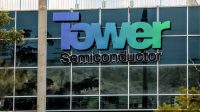Google has released the second iteration of Imagen, its AI model renowned for generating and editing images based on text prompts
Google Unveils Imagen 2 is now more widely accessible, particularly to Google Cloud customers leveraging Vertex AI, pending approval for access.
Interestingly, Google has not disclosed the dataset used to train the new model. Additionally, there is no provision for creators inadvertently contributing to the dataset to opt out or seek compensation.
Imagen 2, developed with technology from Google DeepMind, was quietly introduced in preview at Google’s I/O conference in May. According to Google, it boasts significant improvements in image quality compared to its predecessor, although the company chose not to share image samples before today’s announcement. Notably, Imagen 2 introduces new capabilities, such as rendering text and logos.
During a recent press briefing, Google Cloud CEO Thomas Kurian explained that Imagen 2 enables the creation of images with text overlays, catering to advertising needs. The model aligns with other leading image-generating models like OpenAI’s DALL-E 3 and Amazon’s Titan Image Generator. What sets Imagen 2 apart is its ability to render text in multiple languages, including Chinese, Hindi, Japanese, Korean, Portuguese, English, and Spanish, with plans to support more languages in 2024. Moreover, Imagen 2 can overlay logos onto existing images, offering a unique feature among its counterparts.
Vishy Tirumalasetty, head of generative media products at Google, explained that Imagen 2 can generate emblems, lettermarks, abstract logos, and overlay them onto various surfaces like products, clothing, business cards, etc.
Utilizing novel training and modeling techniques, Imagen 2 can comprehend descriptive, long-form prompts and provide detailed answers about elements in an image. These techniques enhance the model’s multilingual understanding, allowing it to translate prompts in one language to outputs, such as logos, in another language.
Imagen 2 incorporates SynthID, a watermarking approach developed by DeepMind, to apply invisible watermarks to its created images. Google claims these watermarks are resilient to edits like compression, filters, and color adjustments. However, third parties lack access to the tool required to detect these watermarks.
Google has not disclosed the data used to train Imagen 2, a strategy differing from its approach with the first-gen Imagen. The company had previously disclosed the use of the public LAION dataset for training the first-gen model, which included problematic content.
Concerns about intellectual property and generative AI are rising, with corporate customers and developers expressing worries about regurgitation, where the model spits out identifiable content from its training examples. A recent survey by Acrolinx revealed that intellectual property was the primary concern for nearly a third of Fortune 500 companies using generative AI.
To address these concerns, Google has expanded its indemnification policy, protecting eligible Vertex AI customers from copyright claims related to both Google’s use of training data and Imagen 2 outputs. However, there is no provision for creators to opt out or receive compensation in this release.








